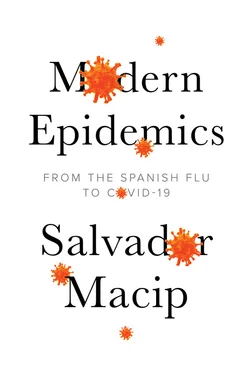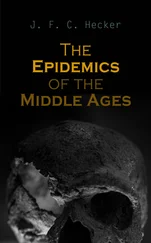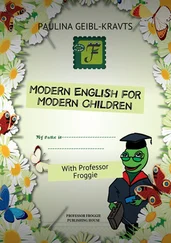However, in order to make these kinds of decisions, we need clear information about the present risks of suffering from a serious infection and what we can do to prevent it. It isn’t always easy to obtain this because we are constantly finding clashing opinions in the media, ranging from those announcing an apocalypse to others who believe there is nothing to worry about. Who is right? We must respect viruses and bacteria and understand that we can’t always defeat them, and now, well into the twenty-first century, we also need to know the extent to which it’s possible that a pandemic can cause millions of deaths, as has happened several times throughout history.
A tool for understanding the present and preparing for the future
This is where we scientists can help a little. Popular science books like this can make a humble contribution to general knowledge and, in doing so, gradually ensure that microbes cease to be the great unknowns we only talk about when it’s already too late. Here, you will find some tools offering a better understanding of how infections work and what resources we have for stopping them. This information could be useful in the future, but it has special relevance now when COVID-19 has caused such an upheaval to our way of life. That is the reasoning behind publication of this updated, expanded edition, which includes everything we know so far about coronaviruses.
In the following pages, I’ve tried to fill in the gaps in general knowledge about microbes and to provide readers with a direct account of, and basic data about, such common but, in fact, little understood diseases like flu and AIDS, which are caused by the most important microbes. On some fronts of our struggle against infections, we remain in a tactical draw, with no guarantees that the situation will continue like this indefinitely. On others, we are clearly losing the game. And according to some experts, the situation can get worse at any time and we won’t be able to do anything to prevent it. We shouldn’t even count on our few victories because all the ground we’ve gained could be lost overnight if we are not careful.
Few fields arouse as much fear and incomprehension as microbiology, the study of invisible organisms that are as likely to help us to survive as to wipe us off the face of the Earth. In recent years, we’ve not only seen the spectre of influenza making front-page news; we’ve also learned to live with AIDS – the most significant pandemic our species has suffered for centuries – and to such an extent that many people have lost respect for it. We’ve heard news of the advance of a type of tuberculosis that can’t be cured with any drug, but we think that this is a problem that will never affect us. Thanks to irresponsible media campaigns, we’ve become so scared of vaccines that child health has regressed by several decades. We’ve discovered that a small amount of white powder inside an envelope can keep a whole country terrified for months. We’ve feared that the next war could be fought by throwing deadly bacteria at civilian populations. We’ve seen how the military considered that a disease we believed was eradicated could be more effective than an atomic bomb. And lurking behind all this are always the same culprits: microbes.
We must realize that viruses and bacteria haven’t only shaped the history of humanity, they are also responsible for millions of deaths, although they are not always front-page news. We need to know the subject well enough not to be flummoxed by the inflated reports we find in the media but, at the same time, to know when we have to act quickly. We must be aware of the strategies we have within our reach for combating microorganisms and the extent to which they can protect us. And, above all, we need to put an end to a series of myths and false beliefs that are hindering advances in the area of health. My aim as an educator is to remedy some of these shortcomings.
The book is divided into two parts, which are independent and can be read in the order the reader prefers. In the first, more general part, I will give an account of what microorganisms are and describe some of the historic pandemics that have seriously threatened our survival. The second part focuses on the main infectious diseases we haven’t yet managed to control; namely, what we can rightly call the four great modern plagues: influenza, AIDS, tuberculosis and malaria. They are important because of the number of people they affect around the world, their serious economic and social impact, their aggressiveness and, in some cases, the scant means we still have for fighting them. Some have already spread all over the planet. Others are circumscribed to certain areas, but that doesn’t mean they don’t cause large numbers of casualties. I will assess how far we are from defeating them and the risks of seeing them turning into tragedies beyond our control. I will also discuss, in particular, the gravity of the present pandemic and how it’s expected to evolve.
In this book, I want to raise several questions that I believe are necessary. Does our future depend on microorganisms? Why do antibiotics stop being effective? How much longer will they serve us? Will an AIDS vaccine ever be found? Or a cure? Why are we so afraid of influenza coming from animals, like bird or swine flu? Could a flu epidemic today wipe out half the world’s population? Do we have the means to stop dangerous infections before they spread? Should we fear an attack with biological weapons? Are we immune to infectious diseases that have been eradicated? What can we do to avoid being infected? Can vaccines cause autism? We will now move on to delve into the fascinating world of viruses and bacteria in order to find the answers.
I don’t think anyone would doubt today that infectious diseases are a global problem. They start in one corner of the planet, but our lifestyle helps them to spread like wildfire. Pandemics are still frequent, and we must learn from every episode so we can do better next time. These are problems we can’t ignore. I hope this book will help readers to see what it means to share the planet with all these invisible enemies and that, at the end of the day, we will be able to find together that much-needed point between alarm and caution which will allow us to survive as a species for many more millennia.
Part ISharing the World with Microorganisms
We humans have managed to escape from our predators. In the security of urban settings, we don’t have to worry about being devoured by lions, tigers or other carnivores that are stronger and faster than we are. As a result, we’ve successfully occupied all the ecosystems and multiply like no other animal has ever done before. We therefore tend to think we are invulnerable, at least when it comes to competing with other inhabitants of the Earth for our everyday survival.
This idea couldn’t be more wrong. We are immersed in a constant struggle against an adversary so powerful it can eliminate the human race in a matter of months. Indeed, it’s been on the point of doing so more than once. I refer to microorganisms, our invisible enemies, the millions of microscopic beings sharing our habitat, the bacteria, viruses and many other minuscule life forms with which we have a very special love–hate relationship. Thanks to them, we’re alive. Because of them, some 14 million people die every year. Why are we still vulnerable to such infinitesimal organisms? This chapter will introduce the main kinds of microbes and describe how they interact with humans.
Microbes are the oldest inhabitants of this planet. They’ve been around for between 3,000 and 4,000 million years, but humans didn’t discover them until a little more than a century ago when science was sufficiently advanced to let us see them close up with the aid of a microscope. During the first 2,000 million years, microbes, and specifically bacteria, had the Earth to themselves. They were the first to appear and will doubtless be the last to leave because they are not only the most diverse form of life but are also the one that most easily adapts to any conditions. If a catastrophe wiped out most life on Earth, they would probably be the only survivors.
Читать дальше












